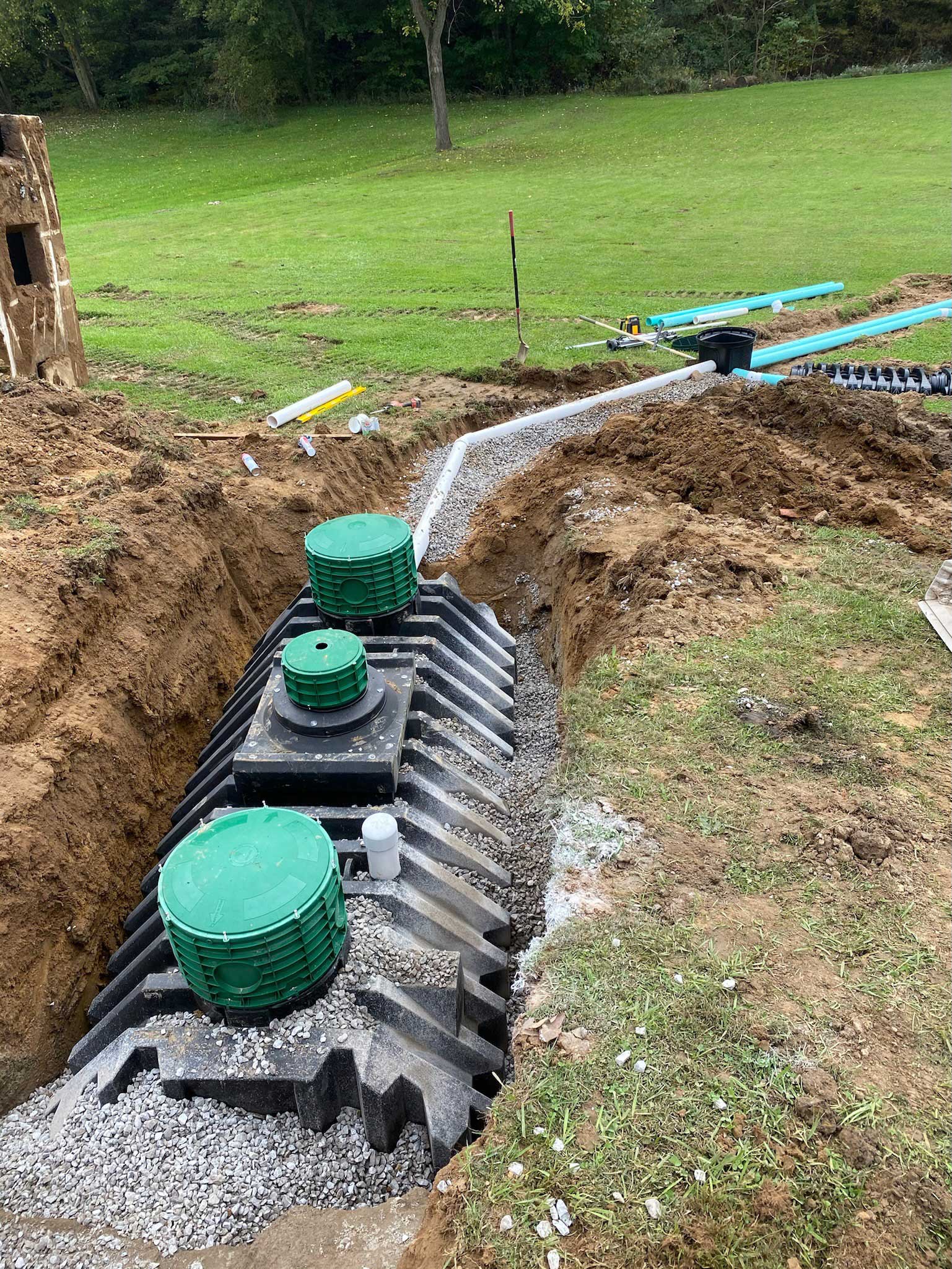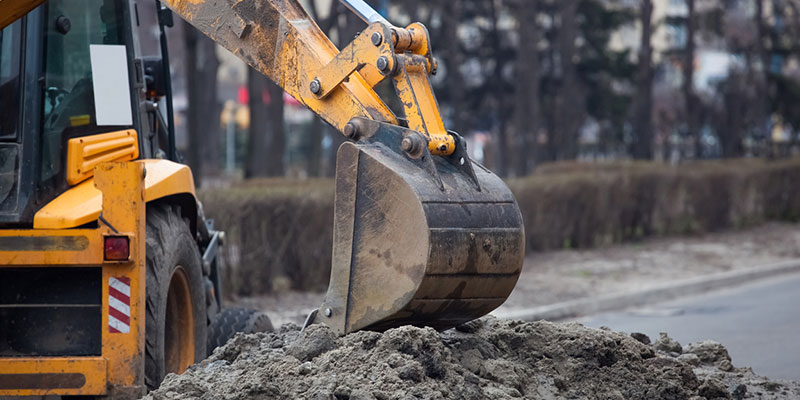Business Lancaster Trenching - Trenching Services for Services in Lancaster
Business Lancaster Trenching - Trenching Services for Services in Lancaster
Blog Article
Extensive Exploration: The Scientific Research Behind Superior Excavation Practices
The realm of excavation methods is a domain where scientific research intertwines with craftsmanship to unearth the mysteries concealed beneath the planet's surface area. From old hand devices to contemporary hydraulic excavators, the advancement of excavation strategies has been a testament to human ingenuity and technological advancements. However, what genuinely sets exceptional excavation methods apart is a deep understanding of geological principles, coupled with the use of innovative tools and techniques. By checking out the science behind these methods, we can uncover the secrets that exist beneath our feet and appreciate the accuracy and experience that enter into every dig.
Development of Excavation Methods
Throughout background, the evolution of excavation strategies has actually played an important role in progressing building and construction techniques and archaeological explorations. From the basic tools made use of by our ancestors to the innovative machinery employed in modern times, the progression of excavation methods has actually considerably changed exactly how we approach different projects.
In old times, manual work with basic devices such as wheelbarrows, shovels, and pickaxes was the main approach of excavation. This labor-intensive procedure limited the deepness and scope of excavations, frequently leading to slow development and restricted access to specific sites. Nonetheless, as people progressed, so did the methods and devices made use of for excavation.
The Industrial Revolution noted a turning point in excavation experiment the intro of steam-powered machinery. This technology revolutionized the area, enabling faster and much more substantial excavations. In contemporary times, innovation plays a pivotal role in excavation, with innovations like GPS systems, drones, and 3D scanning enhancing precision and efficiency in the area. The development of excavation methods remains to shape the method we develop, check out, and comprehend the world around us.
Duty of Technology in Excavation

The combination of innovative innovation has actually essentially changed the area of excavation, boosting accuracy and effectiveness to unmatched levels. One of the key technical improvements that has actually substantially influenced excavation methods is the use of GPS systems. These systems permit for specific mapping of excavation websites, allowing operators to precisely situate below ground utilities and structures. Furthermore, the usage of telematics in excavation devices has allowed real-time tracking of machine efficiency, leading to positive upkeep and boosted operational efficiency.
Additionally, the arrival of 3D modeling and simulation software application has streamlined the planning procedure for excavation tasks. Engineers and drivers can now envision the whole excavation procedure prior to beginning, maximizing and recognizing potential challenges operations. Together with this, the implementation of drones in excavation activities has assisted in airborne studies, volumetric measurements, and website inspections with unrivaled rate and precision.
Geological Concepts in Excavation
An understanding of geological principles is essential for guaranteeing the architectural integrity and stability of excavation websites. Geological aspects play a vital duty in determining the feasibility and security of excavation jobs.
In addition, the geological framework of the location, consisting of faults, check that cracks, and rock formations, need to be carefully assessed to identify prospective dangers and challenges. Digging deep into near geological fault or unpredictable rock developments can result in instability and potential dangers. By conducting comprehensive geological surveys and analysis, designers and excavators can establish strategies to alleviate dangers and guarantee the successful completion of excavation jobs. Eventually, incorporating geological principles right into excavation methods is essential for attaining secure, effective, and sustainable outcomes.

Most Current Devices for Excavation
In the world of excavation practices, modern advancements in devices have transformed the efficiency and accuracy of excavation procedures. These drones can offer in-depth aerial surveys of excavation sites, offering real-time information on topography and potential threats.
Another cutting-edge device acquiring popularity is the application of 3D printing modern technology for producing personalized excavation tools. This enables the production of specialized devices that are customized to the specific needs of a project, increasing performance and minimizing downtime.
Moreover, developments in products science have resulted in the development of stronger and much more sturdy excavation devices. lancaster trenching. Tungsten carbide-tipped excavator add-ons, as an example, offer exceptional performance in difficult ground problems, improving efficiency on-site
Science's Influence on Excavation Practices

Furthermore, scientific research study on soil auto mechanics and geotechnical design has actually provided important insights into soil behavior, permitting excavation specialists to make enlightened choices pertaining to excavation methods and soil stabilization methods. In general, scientific research continues to drive innovation and enhancement in excavation techniques, making excavation tasks extra effective, cost-efficient, and sustainable.

Conclusion
In verdict, the evolution of excavation methods has been considerably affected by innovations in modern technology and a deeper understanding of geological concepts. The most up to date tools and equipment utilized in excavation have actually enhanced performance and precision in the field. The application of scientific understanding has substantially boosted excavation methods, resulting in a lot more effective and sustainable techniques for excavating various sorts of materials.
In the realm of excavation techniques, modern developments in tools have actually changed the efficiency and accuracy of excavation processes. By leveraging clinical concepts, the excavation market has actually been able to substantially boost efficiency, precision, and security in excavation procedures. GPR allows excavation teams to non-invasively scan and map subsurface frameworks, utilities, and potential risks, enabling them to intend excavation tasks with higher precision and minimized danger check my blog of mishaps.
In addition, clinical study on dirt mechanics and geotechnical design has supplied beneficial insights into soil actions, allowing excavation specialists to make educated decisions regarding excavation techniques and soil stabilization methods. Generally, science continues to drive advancement and enhancement in excavation techniques, making excavation projects extra efficient, economical, and lasting.
Report this page